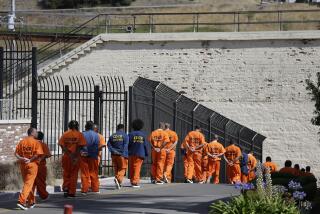Think you know about crime in the U.S.? Think again
Forget, for a moment, everything you think you know about the crime rate. Because it’s probably wrong.
The United States is almost safer than ever, according to the latest statistics from the FBI’s Uniform Crime Reporting Program, the nation’s bible for crime stats.
Despite the recession, despite joblessness, despite guns and drugs and Al Qaeda, murder, rape, robbery and assault dropped 4% in 2011.
That continues a long fall from violent crime’s high in the early 1990s — a plunge that continues to astound everybody. Property crimes have dipped for nine years straight too. Higher crime is typically associated with hard economic times, but the grinding economy hasn’t stopped the drop.
Experts’ explanations veer all over the place: We have more cops, and new technology and the data-driven policing renaissance have made them better at policing. Crime is perpetrated mostly by young people, and America’s population is, on average, getting older. The crack epidemic has petered out. More abortions have meant fewer dadless troublemakers. (Not kidding; that’s a real theory.)
Oh, and we have more criminals in jail than anybody else in the world.
Which is perhaps one reason you shouldn’t trust these numbers as much as you might.
“Statistics are notoriously slippery, but the figures that suggest that violence has been disappearing in the United States contain a blind spot so large that to cite them uncritically, as the major papers do, is to collude in an epic con,” Christopher Glazek wrote in a recent issue of n+1 magazine. “Uncounted in the official tallies are the hundreds of thousands of crimes that take place in the country’s prison system, a vast and growing residential network whose forsaken tenants increasingly bear the brunt of America’s propensity for anger and violence.”
Prison rapes, murders, assaults — “Crime has not fallen in the United States,” Glazek writes. “It’s been shifted.”
His article — titled “Raise the Crime Rate” — made the equally provocative suggestion that the cost of safer cities has not been worth the hidden costs of uprooting nonviolent offenders from their homes and their families to hide them away in prisons, from where they are more likely to return to the streets jobless and to become repeat offenders.
At which point they return to the miseries of prison, and the cycle continues.
“You cannot relieve the suffering of the prison population without increasing safety risks for the rest of us,” wrote Glazek, a senior editor at the magazine. “And increasing those risks, from a moral standpoint, is the right thing to do.”
If this sounds controversial, it is, even though the U.S. Supreme Court has weighed in.
In 2011, for instance, it ruled that California had to release tens of thousands of inmates because crowded prisons had caused “needless suffering and death” that amounted to cruel and unusual punishment. Not a popular position to take, especially in the Golden State.
At the same time, America’s police forces have become increasingly militarized. In many cities, public safety budgets are often the last to be cut, despite police spending increasing 445% since 1982, according to the Justice Policy Institute.
One explanation might be that American voters don’t realize how safe they are.
We are, for some reason, obsessed with rankings and take a particular shine each year to reports using the FBI’s data to rank the “Most Dangerous Cities in America” — despite the FBI’s annual, insistent, begging requests not to do so, if just for accuracy’s sake. Cities’ reporting methods and accuracy vary.
But the gap between perception and reality when it comes to crime has never quite closed. In 1994, when violent crime was at or near its peak, 43% of Americans told Gallup they’d be afraid to walk home at night. In 2010, that number had only dipped to 37% — despite statistics showing violent crime had plunged by two-thirds.
Look at TV — and not just at CBS’ wildly popular, crime-obsessed prime-time lineup.
A 2004 study by Ronald Weitzer and Charis E. Kubrin found that people who watched local news — with its oft-sensational, if-it-bleeds-it-leads attitude — were more afraid of crime than those who didn’t.
And in a competitive media marketplace of television, newspapers and the Web, you might not be surprised to see greater focus on always-popular crime news despite the nation’s dropping crime rate.
Meaning it’s increasingly possible that what you see is becoming less and less representative of what life is actually like.
Don’t believe all this? Then ask yourself: How many people will read this story versus the one about the Miami face-eater?
Which headline will you remember most?
Violent crime in America nears its lowest point in generations.
Florida police kill naked man as he chews on another man’s face.
The defense rests — though it probably shouldn’t.
More to Read
Start your day right
Sign up for Essential California for news, features and recommendations from the L.A. Times and beyond in your inbox six days a week.
You may occasionally receive promotional content from the Los Angeles Times.







